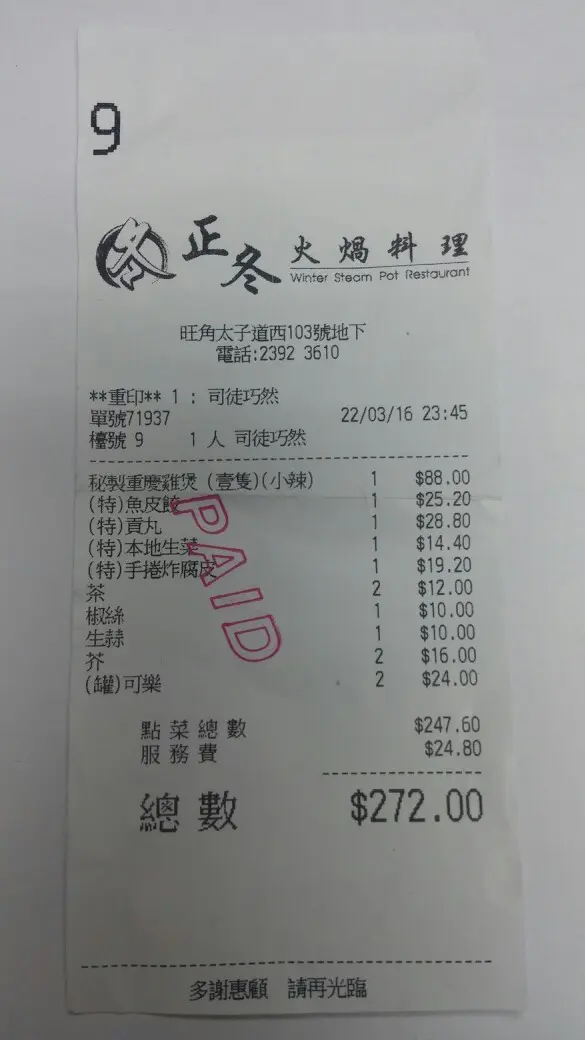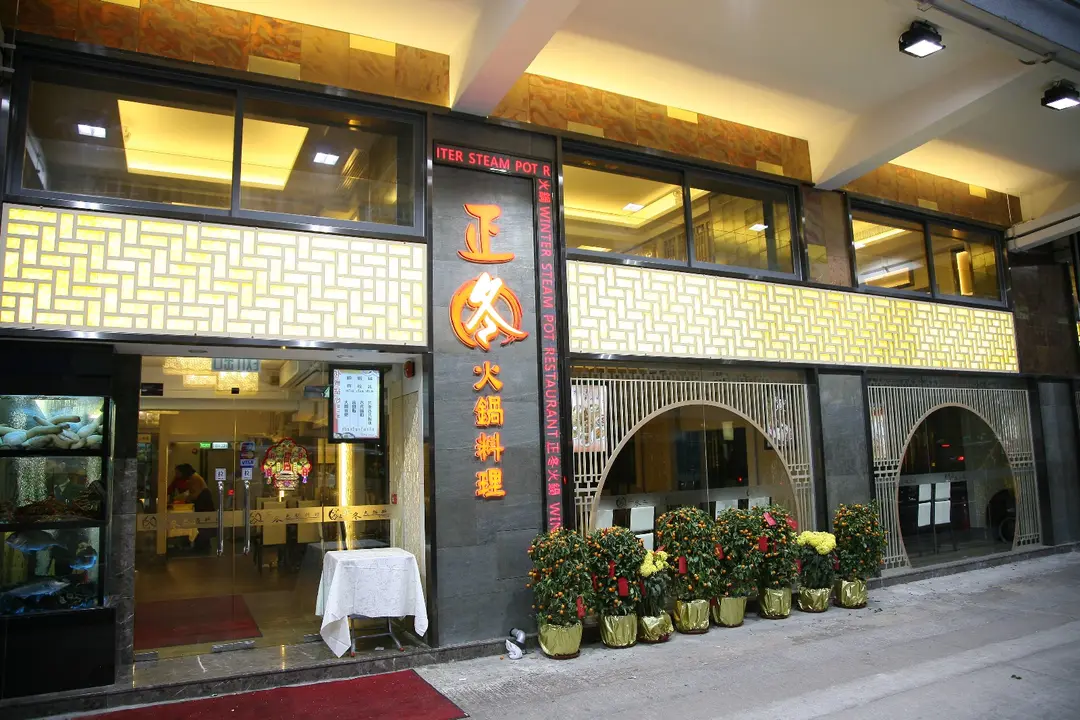到店後被安排就坐, 同事提意嘗試雞煲, 那我們便再隨意選一些火鍋配料, 便繼續我們的閒聊
首先介紹一下所點選的食物
1. 秘製重慶雞煲(小辣) 1隻
~ 雞煲的醬料十分濃, 配上芫茜,辣椒,香料等等, 因本身的我吃不了太辣, 這個辣中帶點甜味的醬汁也算不錯,
唯一是等候這個時間頗長, 其他火鍋配料也到齊, 仍未來到
2.魚皮餃
~外皮比較厚實, 即使嘗試煮耐一點也沒改變, 咬下去有點吃力, 而餡料也屬一般, 油份重, 吃不下2隻便膩口
3.手捲炸腐皮
~己存放了一段時間了, 油份已滿佈腐皮面, 沾了雞煲醬汁食用, 蓋過了那油油的感覺, 但不是十分鬆脆了
大家邊吃邊閒聊的時間過得很快, 已有滿滿累意便打算結帳返家了
走到收銀櫃台結帳, 收銀員的態度十分惡劣, 找回的錢是掉在櫃檯上, 但沒有收據發給我們, 便請那女收銀員幫忙發一張單據, 女收銀員臉一黑更以卑視的態度再次掉那單據在櫃檯上,
我們一看, 椒絲$10 生蒜$10 在沒有給我們的情況下收取, 在我們進店坐下時也沒有告訴我們有這收費項目, 我們己即時反映這問題
那當然跟收銀員查詢, 但她完全不作反應, 當我們視而不見, 繼續做她的工作, 沒有理會我們,
我們再跟一位男店員投訴, 他只是裝傻, 完全沒有人理會收多錢的投訴, 亦當我們視而不見, 繼續做他的工作, 我猜無理收多顧客的錢, 也故意不發單據比客人, 要客人查問才會給予, 到顧客發現單據真的出錯, 便會黑臉及態度差回應, 更可惡是裝傻裝無知的態度去得過且過了事,
但今天我們已經太累, 不想再跟這些令人氣憤的店員爭論, 最後也沒有退回多收的錢給我們,帶著無奈又氣憤的心情離開
只希望其他顧客不要再受害, 要小心注意他們的營運手法, 我認為就算出品有多好, 但服務態度也是經營之道, 為何不能夠用心對人, 人與人相處也不會形成太多怨憤, 所賺到的才是真正的財富

